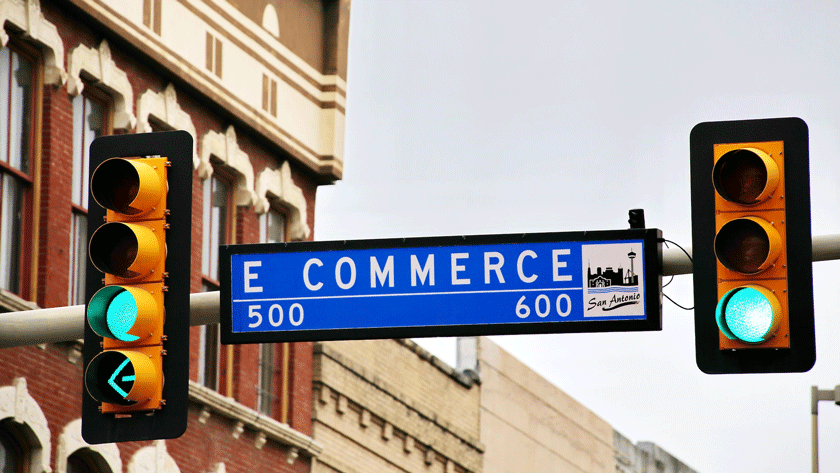To enhance the shopping experience for their customers, many e-commerce stores rely on 3D rendering for better product visualization. As aesthetics, design, and visual appeal are the needs of the hour, a render farm is a necessary resource for e-commerce stores. In this article, we will walk you through the benefits, importance, and ways you can utilize 3D rendering effectively.

The Benefits of 3D Rendering in E-commerce
As the attention span is reducing, visual learning and shopping are becoming the norm. Research states that 65% of people are visual learners. Therefore, when we talk about online businesses, especially e-commerce, they are required to design for such consumers.
If you dig a little deeper, you will also find that 3D modeling enhances the shopping experience by showcasing product features that traditional photographs often cannot capture. Thereby building customer trust and driving increased sales. It also proves to be cost-effective compared to traditional product photography, since it eliminates the need for physical products and costly photoshoots. Ultimately, it is a treat for customers to shop from their comfort zone and be sure about their purchase.
Furthermore, 3D product visualization provides an engaging shopping experience, attracting a wider audience and boosting purchase confidence. Lastly, the ability to render upcoming products in 3D allows websites to effectively market products even before they are available, generating anticipation and interest.
Reduce bounce rates and improve customer engagement
With the ability to interact with 3D models, visualize customization options, and examine products from different angles, customers are more likely to stay on the website for longer periods, reducing bounce rates.
This increased customer engagement leads to a deeper connection with the products, higher levels of trust, and, ultimately, a higher likelihood of conversion. Therefore, implementing 3D visualization can be a valuable strategy for minimizing bounce rates and fostering better customer engagement. 3D rendering has gained significant popularity in e-commerce and online retail due to its various advantages. It offers accurate and detailed product representations, enabling customers to make informed decisions and leading to higher satisfaction rates and reduced return deliveries, such as:
- Enhanced Product Visualization: Incorporating 3D models of your products allows customers to interact with them from various angles. This immersive experience keeps visitors engaged, reducing the likelihood of bouncing.
- Improved Product Understanding: 3D modeling provides a more accurate representation of your products, helping customers understand their features and benefits better. This clarity reduces the chances of visitors leaving due to uncertainty.
- Interactive Product Customization: Some e-commerce platforms enable users to customize products in 3D, such as choosing colors, sizes, or configurations. This interactive experience encourages visitors to stay longer on your site, exploring different options.
- Reduced Return Rates: When customers have a more comprehensive understanding of the product through 3D modeling, they are less likely to make purchases they later regret, leading to lower return rates.
Leveraging CGI: Creating realistic 3D visual representations of products for e-commerce
CGI (computer-generated-imagery) is a valuable technology for creating realistic product visuals, with several benefits. Firstly, it enables faster speed to market compared to traditional photography, allowing brands and retailers to launch products more quickly.
Additionally, photorealistic CGI enhances the online browsing experience, increasing sales conversion by presenting products in desired contexts. It also helps establish a strong brand presence and enables the creation of diverse lifestyle representations that resonate with target audiences.
Engaging visuals generated through CGI are crucial for e-commerce sites, as they drive longer page visits, higher engagement, increased add-to-cart rates, and, ultimately, improved sales. As consumer preferences evolve, CGI plays a role in businesses' digital transformation projects, helping them adapt engagement models and capture emerging trends.
3D Visualization of a Product: The Importance of Visual Appeal in E-Commerce
Let’s go straight to the point, you have to make your product more vivid and enjoyable to the viewer. Customers right now like to see a product, like shoes, for example, from different perspectives, using photographs/videos or 3D modeling of the product.
In a very detailed picture, the customer can see the material from which a shoe is made, the texture and customers can imagine how it is having them in their hands. This is the most important thing about visual appeal on an e-commerce, your customer must be able to imagine how it feels to have your product before buying it and certainly they will buy it.
According to research conducted by Adobe, businesses that incorporate 3D visualization on their e-commerce websites witness a noteworthy up to 30% surge in conversion rates, comparable to the application for traditional 2D pictures. According to this research, consumers are more likely to buy things if they can interact with them in 3D.
Best Practices for Utilizing 3D Rendering Effectively
To effectively utilize 3D rendering, following best practices, including optimizing CPU usage and employing physically based rendering (PBR) systems, is important:
- Optimize CPU usage to prevent lag, slowness, and crashes during 3D work.
- Use physically based rendering (PBR) systems to visually represent colors, roughness, and bumpiness through texture maps, reducing the complexity of materials and surfaces.
- Remove hidden and unused data from 3D models to improve performance and reduce file sizes.
- Choose the most suitable 3D rendering software that meets your specific needs, project scope, and desired output quality.
Quick loading times for 3D models
To optimize 3D models and improve their performance, reducing materials and surfacing complexities is beneficial. By leveraging the capabilities of a physically based rendering (PBR) system, colors, roughness, and bumpiness can be visually represented using texture maps instead of incorporating numerous materials and intricate surface details within the 3D model. This approach streamlines the model's structure and enhances its efficiency.
- Optimize 3D Models: Use compressed file formats, reduce polygon counts, and optimize textures to minimize file sizes without compromising quality.
- Lazy Loading: Implement lazy loading techniques to load 3D models on your website only when they become visible in the user's viewport, saving bandwidth and speeding up initial page load times. You can use this one for images to load slower and compress the size of the images between 100kb and 200kb to upload the images properly on your website.
- Caching: Use browser caching to store 3D model assets temporarily on users' devices, allowing for faster subsequent visits to your website. You can minify the CSS and Java files on the website server and the Java should load at the end of the website, which makes your website faster.
Mobile Compatibility
To ensure optimal image display across various screens, it is important to provide alternate bitmaps that match the screen density. This ensures that images appear their best on different devices.
To enhance the rendering performance of your app's UI, it is recommended to debug GPU overdraw and profile GPU rendering speed. These on-device developer options available in Android help identify any inefficiencies in rendering, such as excessive rendering work or lengthy thread and GPU operations. By optimizing GPU usage, you can enhance the app's performance on mobile devices:
| Best Practice | Description |
|---|---|
| Responsive Web Design | Create a responsive design that adapts to different screen sizes. |
| Mobile-Optimized Images and Media | Optimize images and media files for faster mobile loading. |
| Intuitive Mobile Navigation | Implement a user-friendly mobile menu and navigation system. |
| Fast Loading Speed | Minimize page load times to keep mobile users engaged. |
| Mobile Payment Integration | Offer mobile-friendly payment options for seamless transactions. |
The Future of 3D Rendering in E-commerce
The worldwide e-commerce and other non-store retailer markets are predicted to reach $9.5 trillion by 2027. A mentionable impact of this rise is due to 3D.
Virtual Reality (VR) and Augmented Reality benefiting E-commerce
AR 3D product visualizations have a stronger impact on enhancing the e-commerce experience compared to VR 3D visualizations. VR and AR technologies offer unique applications in enterprise and consumer domains, enabling experiences to surpass real-world limitations. In apparel shopping, AR-based "virtual try-on" provides more realistic garment visualization than VR-based alternatives.
The influence of VR and AR on the customer experience depends on the content and device type used. AR is recognized as a leading trend in visualization and 3D rendering software within the e-commerce industry.
Conclusion
3D rendering is a crucial tool in e-commerce for enhancing product visualization and boosting sales. By leveraging techniques like render farms and embracing emerging technologies like VR and AR, businesses can create immersive experiences that drive conversions and provide a competitive edge in the online marketplace.

About the author
Nicole Holt is an experienced 3D enthusiast with a career in marketing and content writing. Thanks to this unique combination, she is able to showcase the technical intricacies of 3D art and rendering while also making the subject accessible to a wide audience. When she's not immersed in the digital world, Nicole can be found in the great outdoors, most likely with her beloved dog, Sammy.
